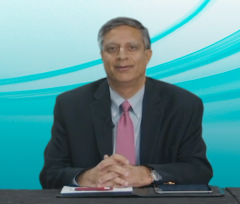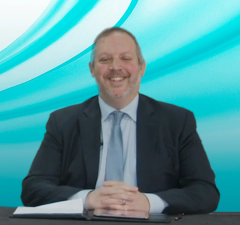
Novel Therapies in Multiple Myeloma
A look at the role of bispecifics and CAR T-cell therapies in the multiple myeloma treatment landscape.
Episodes in this series

Sagar Lonial, MD: Dr Nooka, do you want to update us on BCMA-directed bispecifics, specifically teclistamab, where you’ve had a pretty big experience as well?
Ajay Nooka, MD: The bispecific antibody targeting BCMA and CD3, teclistamab, is 1 of the earliest bispecifics brought into the clinical trial space. The last data cutoff was presented at ASH [American Society of Hematology Annual Meeting] 2021. Among 170 patients who were treated at the target dosage, the recommended phase 2 dosage of 405 µg/kg given subcutaneously every week, the patients were able to achieve responses greater than 65%. Two of 3 people who received this BCMA-targeted bispecific antibody were able to have responses. These responses are very deep. The VGPR [very good partial response] rates are significantly higher among patients who responded. This is the BCMA-targeted space. Similarly, the downside of these data that I’m presenting is that it’s shorter follow-up. The response rates are really good. The median follow-up is close to 7 months. We don’t know whether this would translate into PFS [progression-free survival] benefit in the long run. I’ll be eagerly waiting to hear these data in the coming months.
The other bispecific antibody isn’t targeting BCMA, but it’s targeting GPRC5D. It’s an additional target. Similar to what we talked about with CD38 as a target, and similar to BCMA, these are exclusively present on the malignant plasma cells. Similar to the data that I’ve presented before, 405 µg/kg is the dosing for talquetamab. This has shown an overall response rate of close to 70%, with VGPR rates of 55% or so. It’s very well tolerated, with a minimal adverse effect profile. As we get these bispecifics into this space, we’re seeing more often that infection risks are significantly higher, especially in the COVID-19 setting. There are significantly increased rates of COVID-19. Monitoring these patients very closely, giving them the proper prophylactic antibiotics, and giving them IVIG [intravenous immunoglobulin] as needed are all potential steps that you can take to decrease the risk of these infections.
Sagar Lonial, MD: It’s an exciting class of agents. Having not just 1 but 2 or 3 new targets portends for a great future for patients down the road. Dr Kaufman, I’m going to ask you to switch gears a little and go from antibodies or antibody-drug conjugates to CAR [chimeric antigen receptor] T cells. Can you give us an update or information on what we’re excited about, the recent approval of cilta-cel [ciltacabtagene autoleucel] in relapsed/refractory myeloma, and perhaps talk a little about ide-cel [idecabtagene vicleucel], which was approved a year ago?
Jonathan Kaufman, MD: We had an update about cilta-cel [ciltacabtagene autoleucel], an 18-month follow-up from the initial study, and the data were really impressive: 97% response rate and 80% sCR [stringent complete response] rate. At 18 months, 66% of the patients remain progression-free. The duration of response was almost 22 months. In the updated data, there were no new neurological toxicities, in addition to the prior report, and CRS [cytokine release syndrome], while common, is a little delayed compared with what we typically see with ide-cel [idecabtagene vicleucel]. Ide-cel [idecabtagene vicleucel] CRS is very early, and the average time of initiation of CRS with cilta-cel [ciltacabtagene autoleucel] is around 7 days, even though it can happen earlier.
The key thing with ide-cel [idecabtagene vicleucel] is that we have a year under our belt since its approval. Although these aren’t peer-reviewed data, the experience with ide-cel [idecabtagene vicleucel] in practice has been very consistent with our experience with ide-cel [idecabtagene vicleucel] on the clinical trial: early manageable CRS, rare neurological toxicity, and high response rates.
Sagar Lonial, MD: When we think about having CAR T availability on a commercial basis, not just on clinical trials, has that impacted the way you all practice?
Ajay Nooka, MD: Similar to what we talked about, because CAR T is an extremely effective treatment, as Dr Kaufman just alluded to, if there’s a patient who would be eligible, that would be my first choice in the absence of any existing BiTEs [bispecific T-cell engagers] that are commercially available. Coming to the downsides that we’re seeing with these approvals, the stringent limitation of the vector and vector specifications hasn’t allowed us to have as many slots as we want. There are patients waiting to get onto these slots, and occasionally we get 1 or 2 slots a month. Identifying the right patient who’s progressing at the time and offering these has become a big challenge, and it’s happening across the country. With the new approval of cilta-cel [ciltacabtagene autoleucel], we’ll be getting more slots. I hope there will be a solution for the existing problem. We’re hoping for more slots.
Sagar Lonial, MD: It’s exciting for cell therapy in general.
Transcript edited for clarity.
Newsletter
Stay up to date on recent advances in the multidisciplinary approach to cancer.






















































































